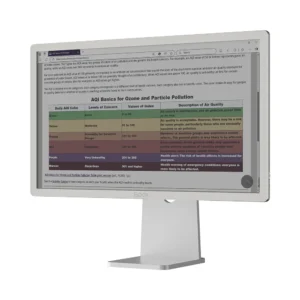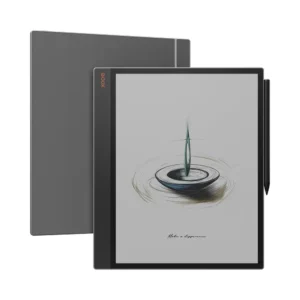During recession the Bank Negara will lower the Fix Deposit interest rate in order to discourage people from hoarding money in the bank and encourage spending. We are now in such a time, with 12 month Fix Deposit interest rate standing at 1.85%.
But sometimes some banks do offer Fix Deposit with higher interest rate; some can even go up to 3.78% per annum– a full 2 percentage point higher than baseline. Given that Fix Deposit is a low risk, low return kind of investment, these offers seem too good to be true. So should I take up this offer?
Before we can answer this question, it’s important to understand where the bank is coming from.
Banks are business entities, as such, they exist to make money. The very first question you need to ask is this, if they can offer a low interest rate, why would they want to offer a higher one? Getting a correct answer to this question will tell you whether it’s a good deal.
Going back to my previous 3.78% interest rate example, the first thing to note is that this is not an offer that you can simply sign up at the counter. Instead, the bank will ask to you sit through a session with their consultants to “understand the investment scheme”. This is a telltale sign that the offer is not as simple as it sounds, there are terms and conditions attached; the devil is in the details!
What could be the terms and conditions? Bearing in mind that the consultants need to be paid– and the money can only come from you, you should be wary that they would be selling you insurance products. Yes, it must be insurance products and nothing else– not even unit trust– because only they can offer enough commission to justify the hiring of consultants.
What is an insurance product?
First thing, the bank won’t be calling it insurance product outright, because somehow the word ‘insurance’ carries a negative connotation for most people. Instead, it often goes by euphemism like investment-linked products. Come to think about it, a bank is an entity that does investment all day long, so selling something with the name “investment-linked” in it is like us at booxmalaysia.com selling “Boox-linked” ereader– it does raise eyebrow, doesn’t it? Could it be that it’s not really a product offered by the bank?
True enough, most of the time, the bank is partnering with an insurance company to sell insurance products. The consultant will then say that the insurance component of the product is very minimum, just barely enough to return you or your next kin the invested money should something bad happens to you. They even have the breakdown of the insurance charge in the prospectus, so you can see for yourself that the insurance is really minimum, that most of the money really going to investment! An unscrupulous investor tends to be satisfied with the “transparency” displayed by the insurance companies and move on.
But that would be a big mistake because, despite that the insurance charges are really minimum, that doesn’t make it a non-insurance product.
So what are the characteristics of an insurance product?
- Extremely long “investment” horizon. Typically at least 10 years lockdown period. Well, you might still be able to withdraw money before 10 years, but the amount withdrawable would be typically less than the money you can get if you put it in FD.
- In a normal investment scheme, setting the issue of volatility aside, you should be able to see constant growth of your investment. But in an investment-linked insurance product, the returns are low ( or even negative) for a quite number of years before it climbs up. You can get this information in the prospectus, it’s detailed right there as per Bank Negara regulation, but you need to be diligent enough to find it.
- It is issued by an insurance company. This point is often overlooked or deemphasized. But let me just repeat it; any product offered by an insurance company, is always an insurance product, regardless of how you call it. An insurance company core strength is providing insurance (duh!), so anything it offers must be always, by definition, insurance in nature. An insurance company selling a “pure investment” product would be akin to McDonald selling Sushi– it wouldn’t taste nice, and you won’t want to take it, I can assure you.
What is the problem with insurance product masqueraded as investment product?
I have no problem with insurance products, and I have several of them. But I always have problems with insurance products masquerading as investment ones.
Insurance and investment are different thing, and they serve different purposes. Surely you are not expecting to buy a vacuum cleaner when all you need is a washing machine? But this is what an “investment-linked” product is trying to do to us!
Secondly, like I said, the commission for insurance product is high whereas for the commission for investment product– unit trust or just plain old stock– is low, and the money must come from you. Here lies the ingenuity of the insurance company; yes they do reduce the insurance charges, but they also increase the management and other fees that you have to pay annually. To put in some numbers, the charge for a bond fund offered by insurance company is 2.6%, but an equivalent fund offered by Public Mutual only charges you 0.45%.
Granted, insurance products do serve a purpose, and so do investment products. The best way to go by is to separate them– you purchase different products tailoring to your specific needs, only then you know whether the money is well-spent, and the returns are according to your expectation or not.
So what’s the Fix Deposit with 3.78% interest rate deal all about?
The consultants won’t admit it outright, but the Fix Deposit with superhigh interest rate is just a loss leader to recruit you into buying an insurance product. The kind of investment scheme that I have seen typically goes like this:
- You commit a certain amount of money for the High FD, say RM 50K. For this you will be able to earn 3.78% annual interest rate, as compared to 1.85%, for one year only. So far so good.
- To qualify for the good deal, you need to commit 3 times the amount–that’s RM 150K– to an “investment linked” product, amortized over 3 years period. The lock-in period is 6 years. Withdrawal before maturity carries heavy penalty and sees you losing a part of your investment. Not only that, for management and other fees, you are charged 2.6% instead of 0.45% annually.
You don’t even need a calculator to see that this is a far, far worse deal than just putting money into conventional FD.
Smokes before fire
You don’t need to see the prospectus and read all the fine prints to see all these coming. You can see the smokes even when you are far away from the fire scene. Key indicators:
- The consultants seem extremely eager to serve you. Now I do believe them when they say they don’t earn commission off every deal they make, unlike insurance agents. But the fact is that plain old stock or unit trust won’t be able to excite people as much.
- The consultants are not telling you straight who are their partners in offering the investment-linked products, because they know that doing so will spook you.
- When they finally do, you’ll see that it’s a deal from an insurance company. But banks and insurance companies are not overlapping, they shouldn’t be in the bed together
- When you ask them why the charges are higher than usual, they go off tangent and talk about the protection the deal offers you. Thank you very much, I’m looking at investment but you are selling me insurance.
Conclusion:
There is no free lunch in the world, so every good thing must come with some strings. This is especially true for Fix Deposit scheme with high interest rate, for they often the loss leader for insurance products.
Observe the smoke, and read the prospectus carefully, be a wise investor and pick the investment products that you really need.





